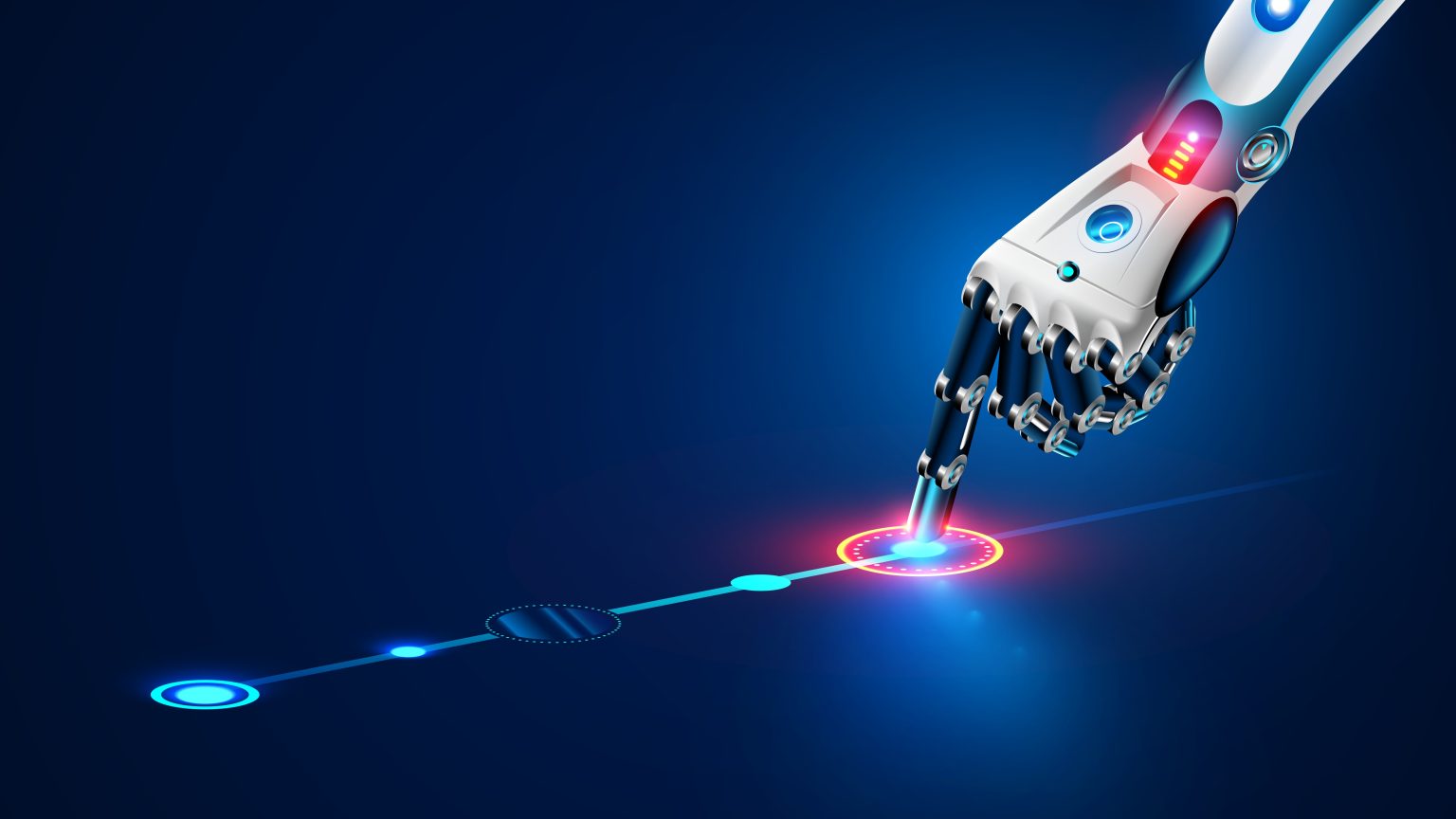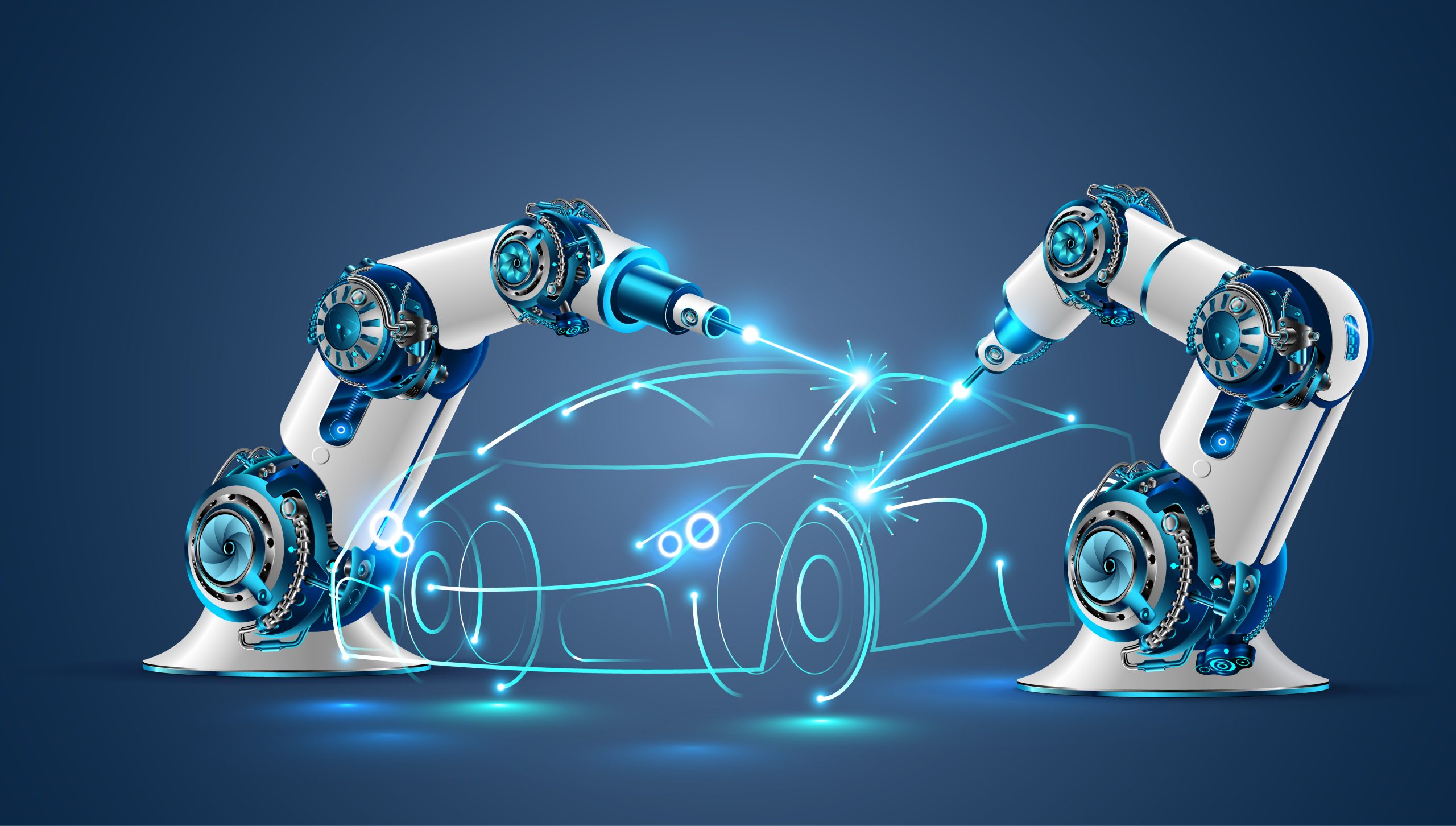Collaborative robots, also known as cobots in manufacturing, have taken the manufacturing industry by storm. Working alongside human workers, these robots can significantly increase industrial efficiency, productivity, and safety. From early prototypes to today’s advanced cobots in manufacturing, with advanced AI technologies, there are limitless opportunities to enhance workflow with the addition of cobots.
Let’s take a closer look at cobots in manufacturing and explore the history of robots, including early prototypes, advancements in AI cobot intelligence, and the potential future of cobots in various industries.
Introducing Cobots in the Manufacturing Sector
Collaborative robots or cobots in manufacturing have revolutionized the industry by introducing flexibility and adaptability into traditional industrial settings. Implementing cobots has significantly shifted how businesses operate today, utilizing cobots that can work alongside humans to increase productivity, efficiency, and safety.
The use of cobots in manufacturing has many benefits. They can operate 24/7, reducing the need for manual labor, resulting in lower labor costs and lower potential hazards to human workers. They can also carry out repetitive tasks that are often mundane and tedious for humans, freeing workers to focus on critical and creative tasks.
While AI cobots can significantly improve efficiency and productivity, they are limited to performing specific tasks. They may not be suitable for tasks that require adaptability or flexibility, which may require human workers. So, in the future, AI cobots may develop the capabilities to adapt to more complex tasks.
Early Prototypes of Pre-Programmed Robots
Early prototypes of pre-programmed robots were designed to carry out very simple tasks, which were pre-defined and limited in scope. These early prototypes of cobots in manufacturing were rigid and lacked some of the more flexible capabilities required for efficient use in the manufacturing industries.
The Unimate, developed by George Devol and Joseph Engelberger in the 1960s, was designed to carry out simple tasks like factory welding and material handling. The robot was preprogrammed with instructions and followed them to complete the task. While the Unimate was a significant breakthrough in robotics, it was limited and could not adapt to changing tasks or environments.
Despite their limitations, early prototypes of pre-programmed robots paved the way for developing more advanced collaborative robots (cobots) that are widely used in manufacturing today. Technological advancements have led to more flexible, adaptable, and efficient cobots than their predecessors.
One of the main advantages of modern cobots is their ability to learn and adapt to their surroundings, thanks to advanced AI and machine learning capabilities. This means that they can perform a wider range of tasks and work more efficiently, making them an increasingly popular choice for businesses in the manufacturing sector. For example, cobots with machine learning algorithms can learn from their previous actions and adjust their behavior accordingly, improving their accuracy and efficiency over time.
However, there are still limitations to the use of cobots in manufacturing. One limitation is their high initial cost, which can be a barrier to adoption for small or medium-sized businesses with limited budgets. Additionally, some tasks may still require a human touch, such as those requiring high precision or creativity.
Advancements in AI Cobot Intelligence
Advancements in AI cobot intelligence have enabled them to become more efficient, effective, and safer. Here are some of the key advancements that have been made:
Integration of advanced AI technologies: These technologies have significantly improved the functionality of AI cobots. Machine learning has enabled them to learn and adapt to their environment, while computer vision has allowed them to perceive and recognize objects and their surroundings. This has made them more versatile and capable of performing a wider range of tasks.
Improved safety features: Safety sensors can be added to prevent collisions and accidents, and cobots have become more responsive to human presence. This has made them safer to work with, reducing the risk of accidents in industrial settings.
Examples of advanced AI cobots: Various industries have implemented advanced AI cobots to improve productivity and efficiency. For example, in the automotive industry, AI cobots perform repetitive tasks such as welding and painting. In the food industry, they assist with surgeries and patient care.
V1A050TW TM Robot Techman Robot Closing the Gap 2021
Future of AI Cobots in Manufacturing
The future of AI cobots holds excellent promise as advancements in technology continue to expand these machines’ capabilities and potential applications. Here are some possible areas where future advancements could be made:
- Integration of new technologies: As new technologies are developed, they can be integrated into AI cobots to make them even more efficient and effective. For example, advancements in robotics and machine learning could create even smarter and more adaptive cobots that can handle increasingly complex tasks.
- New applications: AI cobots are already used in various industries, from manufacturing and logistics to healthcare and hospitality. However, there are many untapped areas where they could be used. They could also be used in agriculture for crop monitoring, watering, and harvesting. This could lead to higher crop yields, increased efficiency, and reduced labor costs.
- Benefits and limitations: While the potential benefits of AI cobots are numerous, it’s important to consider their limitations as well. For instance, cobots may not be able to handle tasks that require a high level of dexterity or manual skill, which could limit their usefulness in certain industries. Additionally, the cost of implementing and maintaining AI cobots may be a barrier for some businesses.
Continuous Innovation among Collaborative Robots in Manufacturing
Continuous innovation among collaborative robot manufacturers has been a driving force behind the incredible growth and impact of AI cobots in the manufacturing industry. As discussed in previous sections, integrating advanced AI technologies such as machine learning and computer vision has made AI cobots more versatile and capable of performing a wider range of tasks. In contrast, improved safety features have made them safer to work with.
However, the potential for AI cobots to continue to evolve and improve is immense. Manufacturers are constantly seeking new and innovative ways to improve the functionality and capabilities of these robots, with the integration of new technologies such as 5G connectivity and edge computing being just a few of the possibilities on the horizon.
As manufacturers continue to push the boundaries of what AI cobots can do, the potential applications for these technologies are almost limitless. From healthcare and construction to agriculture and beyond, there is no shortage of industries that could benefit from the advancements in AI cobots.
Staying up-to-date on the latest developments in AI cobots is essential for any business or industry that wants to remain competitive in today’s fast-paced and ever-changing landscape. By exploring these technologies’ possibilities and potential applications, businesses can better understand the benefits and limitations of AI cobots and how they can be leveraged to improve efficiency, productivity, and safety in their operations.
If you’re interested in exploring the possibilities of AI cobots for your business, consider Techman Robot’s advanced cobots with built-in smart vision systems and machine learning capabilities. These cobots are highly versatile and ideal for various manufacturing applications, including material handling, AOI inspection, and palletizing. Contact Techman Robot TODAY to learn more.


